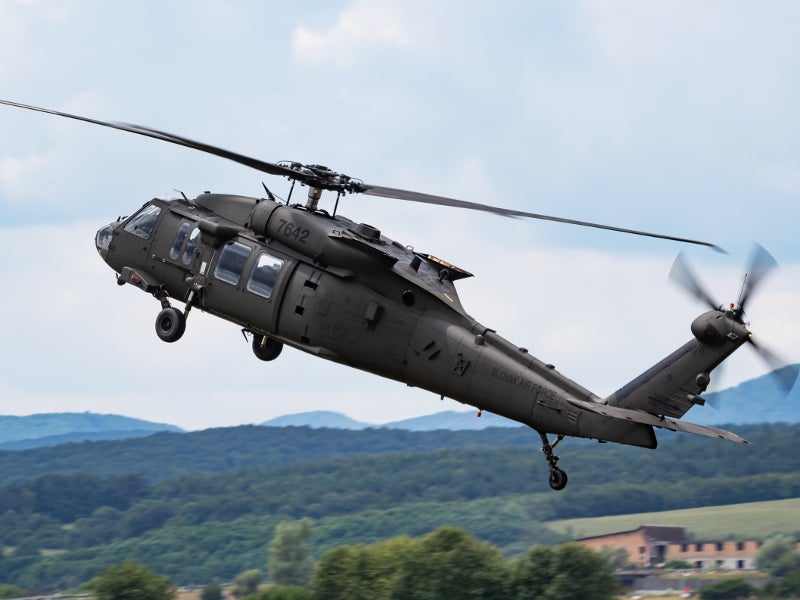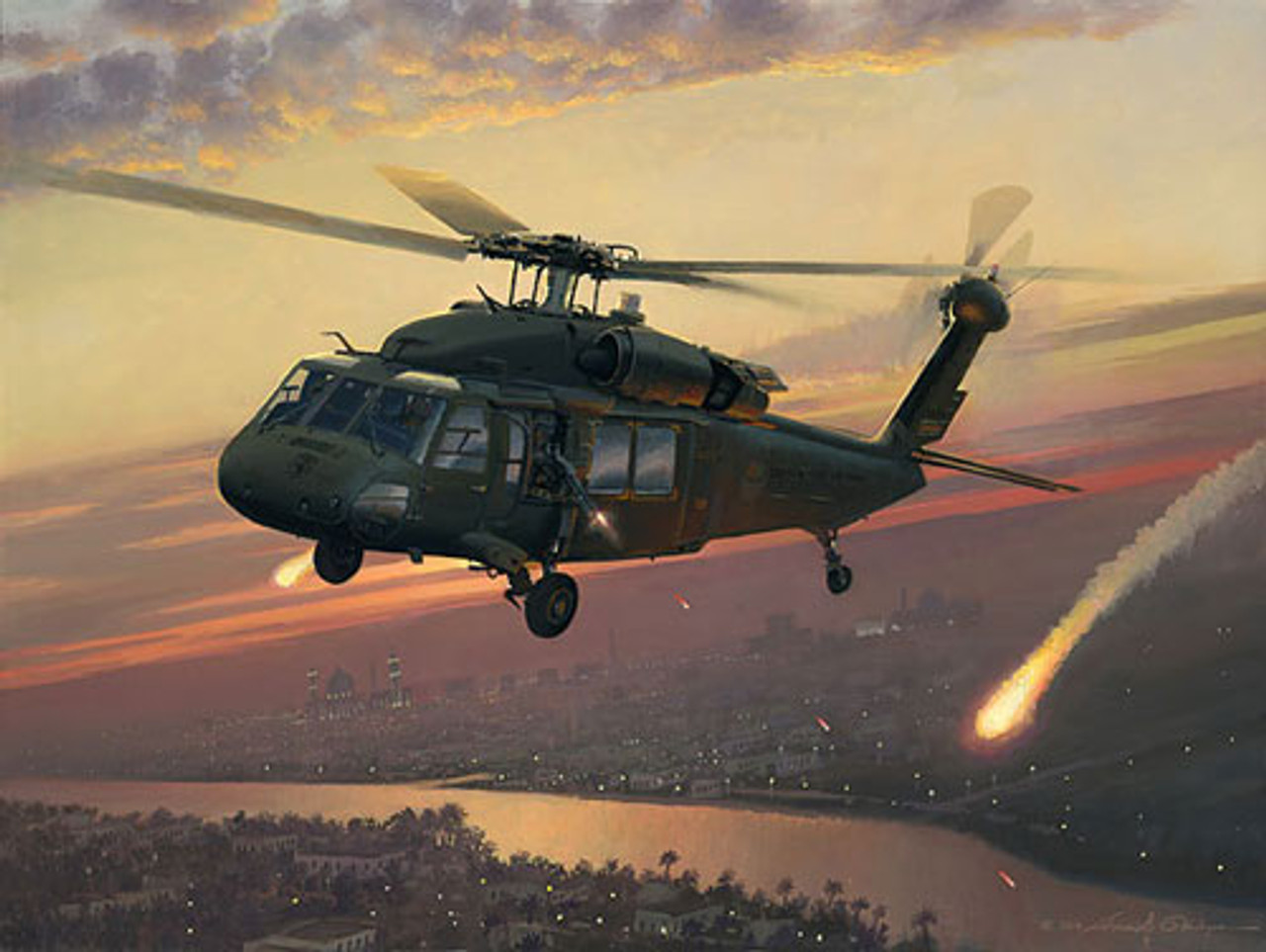UH-60 Blackhawk: Necessary for Search, Rescue, and Tactical Assistance Workflow
UH-60 Blackhawk: Necessary for Search, Rescue, and Tactical Assistance Workflow
Blog Article
Comprehensive Overview of the UH-60 Blackhawk Helicopter
The UH-60 Blackhawk helicopter, a hallmark of modern-day army aeronautics, has played an important role in varied operational movie theaters since its intro in the 1980s. As we discover its complex background, design requirements, and technological improvements, it comes to be evident that the Blackhawk's impact expands far past the battlefield.
Background and Advancement
The UH-60 Blackhawk helicopter has continually been a foundation of U.S. armed forces aeronautics considering that its introduction in the late 1970s. Established by Sikorsky Airplane, the Blackhawk was created to fulfill the Army's demand for a flexible energy helicopter that could do a series of objectives in different environments. UH-60 Blackhawk. The advancement process began in 1972, with the first prototype flying in 1974
Its operational debut came throughout the 1980s, where it was quickly identified for its speed, ability, and dexterity to move soldiers and cargo effectively. The Blackhawk's efficiency in the 1983 Grenada invasion and subsequent operations solidified its online reputation as a trusted workhorse for the united state Military. For many years, the helicopter has actually gone through countless upgrades and variants, adjusting to evolving army demands, consisting of the addition of sophisticated avionics and tool systems.

The Blackhawk's style has actually likewise evolved to serve various branches of the military and allied pressures, showcasing its adaptability. Today, it stays an indispensable element of U.S. military operations and remains to be a recommended selection for rotary-wing aviation around the world, mirroring its enduring legacy and ongoing relevance in modern-day warfare.
Design and Requirements
Engineered for performance and adaptability, the UH-60 Blackhawk helicopter features a durable layout that improves its functional abilities. With a size of 64 feet and a blades diameter of 53 feet, the Blackhawk is created to fit a large array of missions.
The helicopter is powered by two General Electric T700-GE-701C engines, each providing 1,800 shaft horsepower, which makes sure high degrees of dependability and performance in varied environments. The blades system is a four-blade, completely articulated design that enables for exceptional maneuverability and security, also in negative problems.
Additionally, the UH-60 incorporates sophisticated avionics and flight control systems that boost situational recognition and pilot control. The cabin is designed for fast reconfiguration, enabling it to support various goal profiles, from army transport to medical discharge. Generally, the design and requirements of the UH-60 Blackhawk show a dedication to functional quality and flexibility in the area.

Functions and Objectives
With its robust layout and progressed abilities, the UH-60 Blackhawk helicopter serves a wide range of roles throughout numerous military operations. Originally established for troop transport, the Blackhawk has advanced to do a vast array of missions, consisting of clinical evacuation, search and rescue, and logistical assistance. Its adaptability enables it to run in diverse atmospheres, from metropolitan landscapes to tough surfaces.
In fight circumstances, the Blackhawk is critical for inserting and removing special operations forces, providing them with the wheelchair needed to execute their missions efficiently. In addition, the helicopter can be equipped with innovative communication and avionics systems, improving its function as a command and control system in vibrant battle situations.

Technological Innovations
Incorporating innovative technologies has actually significantly improved the efficiency and capacities of the UH-60 Blackhawk helicopter. The unification of sophisticated avionics systems, including electronic flight control and enhanced situational awareness display screens, browse this site has enhanced pilot navigating and decision-making in complicated atmospheres. These systems make it possible for real-time data handling, facilitating better interaction and sychronisation during objectives.
Moreover, the Blackhawk's airframe has actually undertaken substantial upgrades, making use of composite materials that lower weight while raising structural honesty. This adjustment adds to boosted gas performance and functional array. The helicopter is likewise furnished with advanced propulsion systems that offer better power and integrity, guaranteeing optimum efficiency in varied conditions.
Furthermore, the combination of contemporary sensors and weapon systems has increased the Blackhawk's flexibility. Improved targeting abilities and advanced danger discovery systems enable effective interaction in fight situations, boosting goal success rates.
Worldwide Impact and Heritage
The UH-60 Blackhawk helicopter has made an extensive influence on humanitarian initiatives and military operations worldwide considering that its intro in the late 1970s. Its flexibility and advanced technology have allowed it to offer in various duties, including troop transport, clinical evacuation, and logistical support (UH-60 Blackhawk). The helicopter's efficiency in fight scenarios has redefined airborne flexibility, enabling pressures to respond promptly and efficiently to dynamic combat zone conditions
Worldwide, the Blackhawk has been deployed in numerous conflicts, from the Persian Gulf to the Balkans, showcasing its versatility to diverse settings. Its function in humanitarian goals, such as disaster alleviation and search-and-rescue operations, has more solidified its track record as a trusted possession in crisis scenarios.
The tradition of the UH-60 prolongs beyond its military applications; it has likewise influenced helicopter style and functional teaching worldwide. Its success has motivated various other nations to create comparable airplane, enhancing worldwide aeronautics criteria and operational capabilities. As the Blackhawk remains to advance with modern upgrades, its influence on both armed forces and private aviation remains considerable, ensuring its location in background as one of one of the most legendary helicopters of its time.
Verdict
The UH-60 Blackhawk helicopter stands as a testament to ingenious engineering and versatile army application. As an outcome, the Blackhawk has actually left an enduring mark on armed forces aviation, influencing future helicopter layouts and redefining tactical strategies throughout the globe.
The UH-60 Blackhawk helicopter, a hallmark of modern army aeronautics, has actually played a vital function in diverse operational cinemas considering that its introduction in the 1980s - UH-60 Blackhawk.The UH-60 Blackhawk helicopter has consistently been a keystone of United navigate to this site state military aeronautics considering that its introduction in the late 1970s.Engineered for efficiency and convenience, the UH-60 Blackhawk helicopter features a durable style that enhances its functional abilities.With its durable style and advanced capacities, the UH-60 Blackhawk helicopter serves a multitude of duties throughout various army operations.The UH-60 Blackhawk helicopter has actually made an extensive impact on altruistic efforts and army operations worldwide given that its introduction in the late 1970s
Report this page